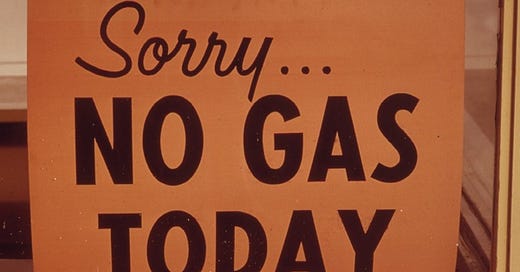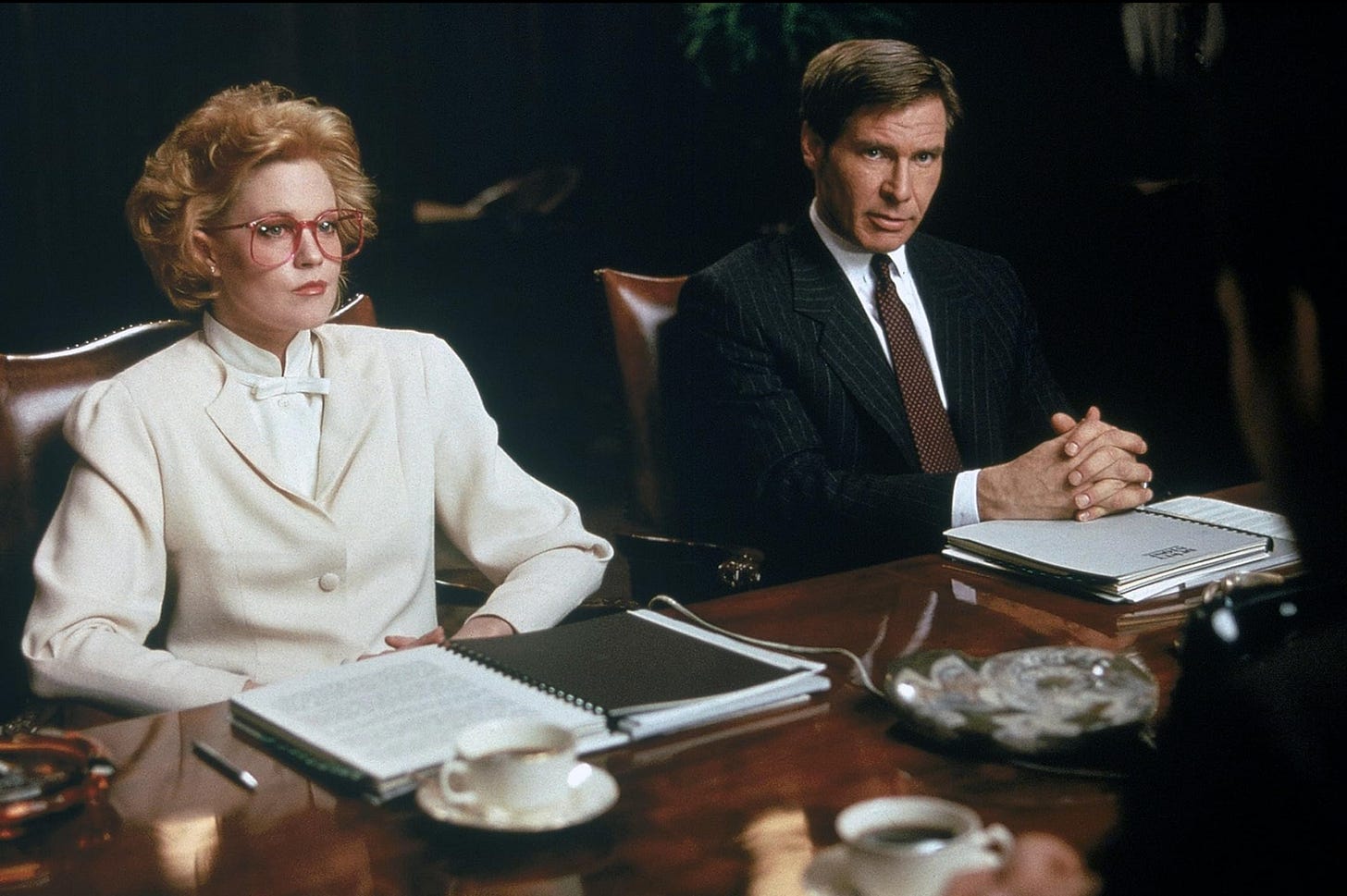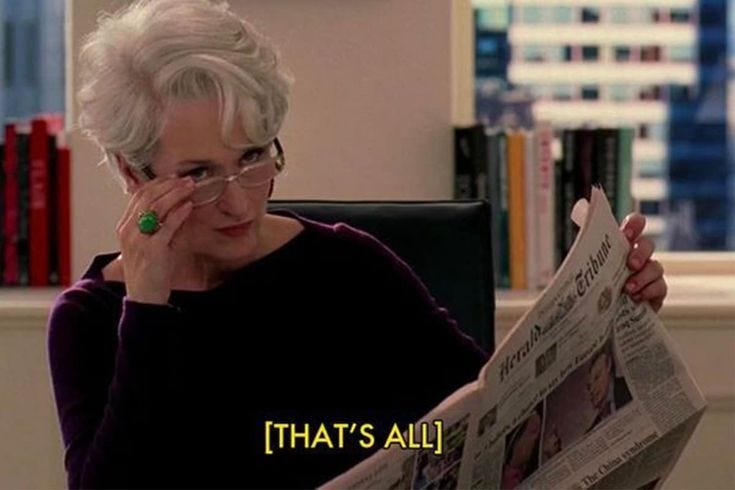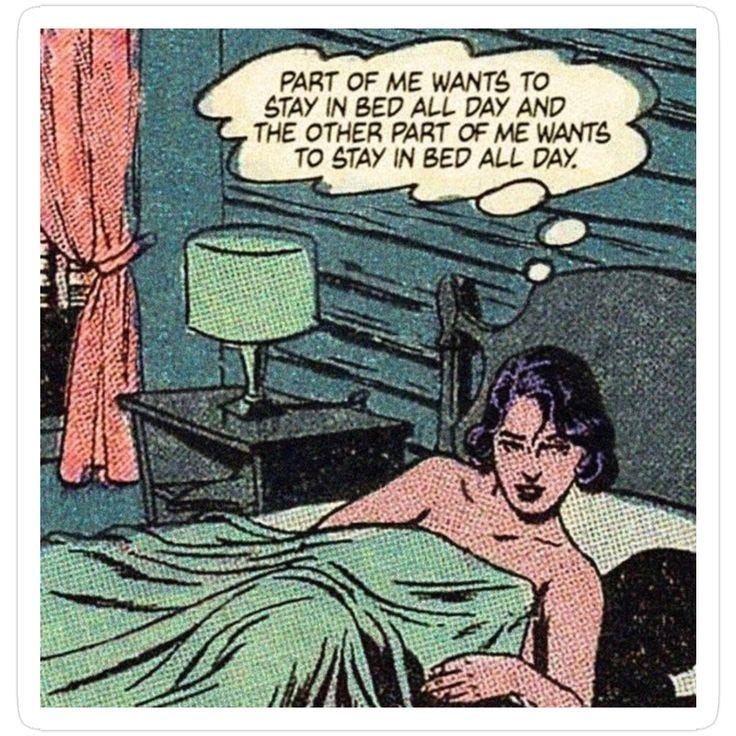I used to be ambitious. For as long as I can remember, really, I had this thing inside me, this unquenchable thirst, this drive, this need to achieve. It was the thing that separated me from my classmates, the thing my family could never understand, and the dominant force in the background of every major life decision: where to live, who to date, whether to have children.
And then one day, my ambition faltered. This was not a particularly novel thing to have happen in the pandemic, as it was hard to feel like ambition of all things had any place in a world of so much suffering. At first, when I panickedly relayed this to my therapist, she encouraged me to see this as a good thing: Now was a moment to get off the hamster wheel, to focus on the other things that mattered — like my health, my relationship, or this thing that other people seemed to have, called hobbies. Plus, she and everyone else assured me: My ambition would come back. It’s not a use it or lose it trait; of course it ebbs and flows.
And yet my ambition didn’t come back — at least not with the same force. I do still feel the familiar urge sometimes: excitement over a meaty story; competitive spark; aspirations of bigger and better projects; visions of grand success. But something has shifted. The feeling is there, but the motivation required to do anything about it simply does not activate, at least not with the same urgency.
“Is what we are grappling with something like ‘lazy ambition’?” a friend texted me one day. She and I had come up as writers together, hired as interns at the same magazine in our 20s, where we learned to pull all-nighters and work harder than our more decorated (mostly male, often Ivy League) peers. “Like we have the feeling, we have the drive, but we are suddenly too tired to execute on it?”
Lazy ambition. It made me laugh; this woman was amongst the least lazy people I knew. But she was describing something I felt deeply: the spark had come back, sort of. But after years of hustling, striving, clawing, climbing, proving ourselves over and over again — and in a seemingly mad race to do it, before we could be thwarted by ageism or children or dying parents — we were just… more muted.
I’ve been thinking back to that conversation lately, as I made my way through a handful of newish books on the subject. For some time now, writers — often, women writers — have been examining how, over the course of the past few years, the familiar compulsion that drove a certain breed of millennial striver like me to “lean in,” “find our passion,” “rise and grind,” had been replaced by the anti-work mantras of a new generation.
“We don’t dream of labor,” my Gen Z college students declared.
“Work won’t love you back,” TikTok influencers preached, correctly.
Who needs goals, when you can have vibes?
These were the people who were supposedly quiet quitting, or doing the bare minimum at work, or what a different generation might have called “phoning it in.” They were embracing lazy girl jobs (like regular jobs, but for unambitious people!) and opting for the soft life, which as far as I could tell involved quitting your job to engage in self-care (and, presumably, being independently wealthy enough to do so). Work, in the vernacular of TikTok, was now talked about like a bad romantic relationship — full of “red flags,” “toxic traits” and a disturbing “lack of boundaries.” Which, well, it kind of was.
But the thing that grated at me, in what seemed like endless discourse on the subject, was that it was rarely men who were inventing these terms, nor being interviewed in the articles about them. It was rarely my male colleagues lamenting they were “over” ambition — or simply too tired to have it — nor offering to lend me their copies of “Rest Is Resistance,” which more than a few women did.
Beyond my own silo, it was not men who were leaving their jobs to work for themselves in record numbers, nor putting “personal well-being” and “balance” ahead of pay and benefits when asked by surveys to rank what is important to them in a job.
With each article about the so-called ambition “vibe shift” that seemed to frame it as a change in American ambition, or millennial ambition, or generational ambition, I wanted to scream: Weren’t we really talking about women’s ambition?
Ambition is a slippery concept. Is it a feeling? A character trait? Something that can be cultivated? Who gets to have it, and who is penalized for it?
Ambition is not inherently gendered, except that it sort of is: Because while men’s ambition, for better or worse, has been studied for hundreds of years — from the myth of Icarus to the founding fathers; the source of both great deeds and great downfalls — it’s only within the last century or so that women have been able to outwardly express their ambition at all.
Even then, it has often come with an asterisk: Have it, but in service of men (see: the rise of the secretary). Have it, but act like a man to achieve it. Have it, but don’t say it out loud — lest you be perceived as too aggressive, a careerist, unladylike, unlikeable. Which isn’t to say that women weren’t ambitious. But it wasn’t often that they could outwardly be it. Ambition was not an attractive trait in a wife, and wife was still the goal.
But the asterisk attached to my generation of women was something different: a kind of pendulum swung entirely in the opposite direction. Ambition was no longer something to be ashamed of, but shouted proudly; positioned not just as a path to personal fulfillment but as the path. And it wasn’t just a selfish endeavor, all this individual ambition — or, at least, that’s what we told ourselves. It was a social good — a responsibility, even — to be shouldered in order to pave the way for those who came after.
This is the kind of ambition that three books by three women journalists take on.
In the first, “All the Gold Stars,” which came out in 2023, lifelong overachiever Rainesford Stauffer documents her early burnout in her late 20s — which led her to reassess her ambition and where it came from. She begins by interrogating the “productivity culture” she says begins in elementary school, as grades, gold stars and standardized tests send the message that self-worth should be found in external achievements.
Jennifer Romolini, a former Sassy editor who rose in the ranks of New York media, is a generation older than Stauffer. But she begins her story of becoming an “Ambition Monster,” the title of her 2024 book, in childhood too, tracing her workaholism to the struggle of her early years as a troubled teen and college dropout in blue-collar Philadelphia who found comfort in work. “Work made me feel like I was somebody other than the unlovable monster I was quite sure I was inside,” she writes.
Samhita Mukhopadhyay, the former executive editor of Teen Vogue, also charts her “burning ambition” and the feeling of emptiness it ultimately left her with in “The Myth of Making It,” which sets her personal story against the cultural history she believes led her generation of women — and mine — to prioritize individual ambition above all, from Helen Gurley Brown’s “Having it All” to the “Lean In” and “#Girlboss” eras of the 2010s.
I saw myself in each of these books. Like Mukhopadhyay, I was a child of 1980s “girl power” — part of the inaugural class of girls paraded into offices for “Take Your Daughter to Work Day”; told, from a young age, that we could achieve whatever we set our minds to. Like Stauffer, I defined myself by my gold stars — my self worth was wrapped up in my accomplishments. Like Romolini, I began my media career amid the Great Recession, in a media industry that was, capsizing. I learned quickly — through basic laws of supply and demand — that I would always be replaceable. To not be, I simply had to work harder.
And so, like them, I did. I worked for free, on vacation, at night, at multiple jobs, during holidays, on my wedding day (with vows to write), on the day my mother was diagnosed with terminal cancer (a piece about overwork!). Boundaries? Lol. Those were not words we used. And while I certainly knew I couldn’t “have it all” (thank you, Anne Marie Slaughter) — at least not all at the same time — I would have it at different times, just like Shonda Rhimes said. (Rhimes, ironically, was Romolini’s former boss.)
This, of course, was the height of the 2010s, when it started to feel like ambition and feminism were inextricably linked — or, as Romolini described it, like “a socially sanctioned #bossbitch boot camp.” Indeed, “Lean In” and “#Girlboss” sat for weeks atop the Times best-seller lists. Against the soundtrack of Rihanna’s “Work,” Ted Talks on “Grit” and “Faking It Til You Make It” were passed around like candy, while brands from Tory Burch to Nike were encouraging women to “Embrace Ambition.” Celebrities got in on it, with Beyonce proclaiming proudly, “I’m not bossy, I’m the boss,” as part of a campaign to encourage girls to lead (sponsored by Lean In). For a while, the ambitious women’s empowerment conference was so numerous that you could attend one every single day. If you were lucky, you’d go home with a baby onesie for the little girl in your life: “CEO in training.”
Cringe as it may be now, those messages also seemed to sink in: If our mother’s generation had to temper their ambition — or dared not use the word — it was now embarrassing to not be ambitious.
I myself was so taken with this kind of ambition that I even worked for “Lean In” for a while, drumming up PSAs to further the ambition mission. If only women knew, the thinking went, that they’d be more likely to get a raise if they smiled while asking — or that men apply for roles when they meet just a fraction of the job requirements, while women only put themselves out there when they meet every single one — then couldn’t we simply circumvent those biases to embrace our ambition fully?
The thing about this era of ambition, long since denounced, was that it was not without good intentions. For the first time, perhaps, we were soberly talking about the barriers that disproportionately affected women, and in particular women of color; we were putting names and data to gendered concepts that had long been considered “all in our heads.” Better to know than not know, right?
The problem with this kind of ambition, of course, is that it never ends. There’s no offramp, no end point, no “after.” As Stauffer puts it, in “All the Gold Stars”: Ambition is cumulative; it builds on itself. And so, rather than fight the system, the end result was that we internalized the idea that we would solve the inequities for ourselves — often, by simply working harder. “I kept thinking there would be a point where I would have worked hard enough that I could exhale,” Stauffer told me. “And the most jarring part of getting older was realizing the extent that none of that is true.” The fulfillment never comes.
But for many of us, the tiredness does.
It’s hard to stay ambitious when you know your salary isn’t going to keep growing; when you overwhelmingly bear the brunt of unpaid labor at work and at home. In the pandemic, no amount of “hustle” could help working mothers. Women are just as likely to be workaholics as men, yes — but they suffer more from it.
Perhaps what so many of us are grappling with is the realization that no amount of hard work was ever going to change the system — and we had burned ourselves out by trying. And yet the rub, of course, is that there is no other system — at least not yet. So, then what?
“We’re very good at criticizing women’s ambition,” Mukhopadhyay writes toward the end of “The Myth of Making It.” “What we’re not as good at is suggesting alternatives.”
Some ambitious and unambitious things I have done since the last time you received this newsletter, which by the way I’m very sorry has been so long:
Found a hobby: Country line dancing!
Be with my mother in her final days of life, then plan a celebration of her life (with line dancing!) (She was a Croatian line dancer all her life, as was I until about age 13 when I decided it was just the lamest thing ever. You could say my reembrace is in part honoring my mother, but much gayer and hotter!)
Throw myself into the depths of Perimenopause snake oil grifters
Discuss 4B, Luigi, this new era of “undetectable” plastic surgery, AI slop, zynfluencers and more zeitgeist topics with my NYU grad students
Facebook Marketplace shopping as grief therapy











I was born at the tail end of the baby boom, 1964. My biggest mistake was buying into that BS. It wasn’t until after 3 “careers” and my late fifties when I finally imploded into such deep depression that I no longer saw the point of living. Thanks to a lot of therapy, meds, and getting over my fears of not having enough $ to sustain a lifestyle teetering on the edge of middle class did I finally pursue my long suppressed dream of being an artist. It’s all B.S. that we’ve been fed. Find your passion and figure out a way to pursue it if you can.
god it’s like this was written just for me